Disclosure: This article contains affiliate links. We may earn a commission from purchases at no extra cost to you, which helps our travel content.
The Amazon rainforest has long been revered as a sanctuary of biodiversity, but beyond its ecological wonders lies a culinary tradition as rich and complex as the ecosystem itself. During my recent week-long sojourn to Iquitos—Peru's gateway to the Amazon and the world's largest city unreachable by road—I embarked on what can only be described as a gastronomic pilgrimage through one of South America's most distinctive food landscapes. What I discovered was not merely sustenance, but a profound connection between people, place, and plate that speaks to the very essence of Amazonian identity.
The Belén Market: A Portal to Amazonian Abundance
My culinary journey began where all authentic food experiences should—at the source. The Belén Market, often called the 'Venice of Peru,' is a floating labyrinth of wooden stalls that rises and falls with the Amazon's seasonal rhythms. Arriving at dawn with my well-worn travel daypack (essential for carrying purchases and a water bottle in the humid climate), I was immediately enveloped by a sensory tapestry that defied my expectations.
Unlike the orderly markets of Japan where I've studied tea ceremonies, Belén operates with a beautiful chaos that initially overwhelms but gradually reveals its own internal logic. Vendors called out in melodic Spanish as I navigated past pyramids of exotic fruits—camu camu, aguaje, and cocona—whose vibrant colors rivaled any artist's palette. The market's protein section presented an encyclopedia of Amazonian wildlife: grilled suri (palm tree larvae), smoked paiche (the Amazon's largest fish), and turtle eggs nestled in banana leaves.
What struck me most profoundly was not the unfamiliarity of these ingredients, but how they embodied the ahimsa principle I've studied in Indian spiritual traditions—a sustainable harmony with nature where nothing is wasted and everything serves a purpose in the greater cycle.

💡 Pro Tips
- Visit Belén Market early (5-7am) for the freshest selection and to avoid the midday heat
- Bring small denominations of Peruvian soles as vendors rarely have change
- Ask permission before photographing vendors or their goods—a small purchase often earns goodwill
Jungle Cuisine: The Philosophy of Amazonian Cooking
Understanding Amazonian cuisine requires abandoning conventional culinary frameworks. Unlike the precisely measured traditions I've documented in Kyoto's tea houses or the mathematical spice balances of Indian cuisine, cooking in the Amazon operates on principles of adaptation and intuition. This became clear during my cooking class with Doña Carmela, a seventy-year-old curandera (traditional healer) who has been preparing jungle foods for over five decades.
In her riverside home, constructed on stilts to accommodate the Amazon's dramatic water level fluctuations, I learned to prepare juane—a tamale-like creation of rice, chicken, olives, and egg wrapped in bijao leaves and boiled to perfection. The process was meditative, reminiscent of the mindfulness practices I've studied in Bhutanese monasteries. 'The jungle provides everything we need,' Doña Carmela explained as she demonstrated how to fold the leaves with practiced precision. 'Our job is simply to listen.'
I recorded the experience using my travel journal, which has accompanied me through seventeen countries. The tactile process of handwriting recipes and observations helps me internalize experiences in ways digital documentation cannot match. This practice of mindful documentation—capturing not just ingredients but contexts and emotions—has transformed how I experience culinary traditions worldwide.
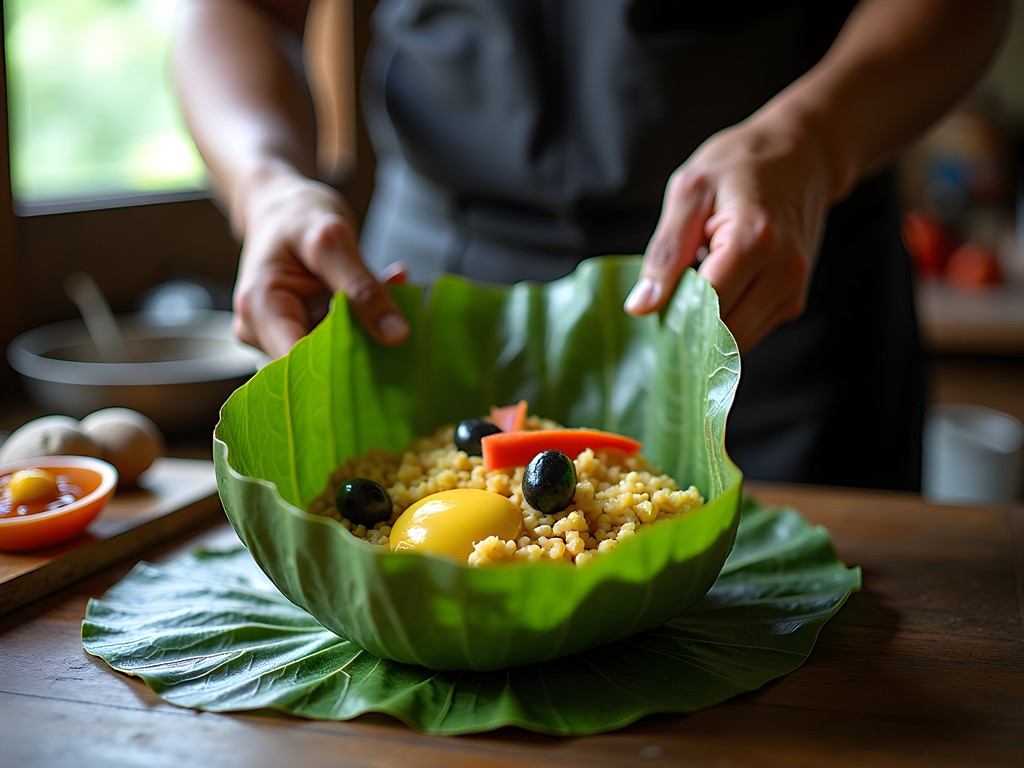
💡 Pro Tips
- Book cooking classes at least 2-3 days in advance through your accommodation
- Bring a small gift for your cooking instructor—quality chocolate or tea from your home country is always appreciated
- Learn basic food-related Spanish phrases to enhance your experience
River-to-Table: Iquitos' Emerging Culinary Scene
While traditional preparations form the backbone of Amazonian cuisine, Iquitos is experiencing a renaissance of innovative cooking that honors indigenous ingredients while introducing contemporary techniques. This movement is exemplified by restaurants like Ámaz and Al Frío y Al Fuego, where chefs trained in Lima's prestigious culinary academies have returned to their Amazonian roots.
At Al Frío y Al Fuego—a floating restaurant accessible only by boat—I enjoyed a revelatory meal of paiche prepared three ways: as sashimi with aguaje sauce, grilled with wild mushrooms, and smoked with cassava purée. The juxtaposition of traditional ingredients with modern presentation created a dialogue between past and present that resonated with my own journey of cultural reconnection.
To fully appreciate these experiences, I relied on my pocket translator to understand menu nuances and converse with chefs about their techniques. This technological bridge allowed me to delve deeper into culinary philosophies than my intermediate Spanish would otherwise permit.
What distinguishes Iquitos' culinary scene is not merely its ingredients but its philosophy of place. Unlike the farm-to-table movement popular in North America, Amazonian cuisine embodies a river-to-table ethos where the Amazon itself—its rhythms, moods, and bounty—dictates what appears on the plate. This acceptance of nature's authority reflects the wu-wei principle I've studied in Taoist traditions: achievement through non-action, or working in harmony with natural forces rather than against them.

💡 Pro Tips
- Make reservations for floating restaurants at least one day in advance
- Try the chef's tasting menu for the most comprehensive experience of Amazonian flavors
- Ask about the seasonal specialties—many ingredients are available for just a few weeks annually
Medicinal Gastronomy: The Healing Properties of Amazonian Foods
Perhaps the most profound aspect of Amazonian cuisine is its seamless integration of nourishment and healing. Unlike Western culinary traditions that primarily emphasize taste and sustenance, Amazonian food culture operates within an elaborate framework of medicinal knowledge that has been refined over millennia.
This dimension became apparent during my visit to the San Pedro Market's medicinal section, where I met Don Augusto, an eighty-two-year-old herbalist who has spent his life cataloging the therapeutic properties of jungle plants. Under his guidance, I sampled preparations that defied conventional categorization as either food or medicine: chuchuhuasi bark macerated in cane alcohol to treat arthritis, uña de gato (cat's claw) tea for inflammation, and camu camu juice containing more vitamin C than any other documented food source.
'In the jungle, we do not separate what heals the body from what feeds it,' Don Augusto explained as he prepared a beverage from seven different barks and roots. 'This understanding was nearly lost during colonization, but now we are remembering.'
I documented these experiences using my digital voice recorder, which allows me to capture nuanced conversations without the intrusion of note-taking. These audio journals have become invaluable resources for my ongoing study of traditional knowledge systems across cultures.
The concept of food as medicine resonates deeply with my professional background in orthodontics, where I regularly observe how oral health connects to systemic wellness. The Amazonian approach offers a sophisticated counterpoint to our increasingly compartmentalized understanding of health in Western medicine—a holistic paradigm where boundaries between culinary arts and healing arts dissolve entirely.

💡 Pro Tips
- Consult with knowledgeable guides before trying medicinal preparations
- Start with mild preparations if you're new to Amazonian medicinals
- Keep a journal of your reactions to different foods and preparations
The Sacred in the Culinary: Ritual Foods of the Amazon
My exploration of Iquitos' food culture culminated in an experience that transcended gastronomy and entered the realm of the sacred. Through connections established during previous visits to Peru, I received an invitation to observe the preparation of masato—a fermented yuca beverage central to communal gatherings in many Amazonian cultures.
In a small Yagua community an hour upriver from Iquitos, I witnessed women working collectively to prepare this ancient drink. The process begins with peeling and boiling yuca roots, followed by the traditional method of mastication—where portions of the yuca are chewed to introduce enzymes that catalyze fermentation—before being left to ferment in handmade clay vessels.
The preparation was accompanied by songs passed through generations, creating an atmosphere of reverence that reminded me of the tea ceremonies I've studied in Kyoto or the preparation of prasad in Hindu temples. What might appear to outsiders as merely a beverage production process revealed itself as a sophisticated ritual that reinforces community bonds and connects participants to ancestral wisdom.
For documenting these sacred food traditions, I've found my compact camera invaluable—its discreet size and silent shooting mode allow me to capture images respectfully without disrupting ceremonial atmospheres. When permission is granted, these visual records help preserve traditions increasingly vulnerable to modernization pressures.
What struck me most profoundly was how masato preparation embodied the principle of samsara—the cyclical nature of existence central to Eastern philosophical traditions. The women explained that the yuca plants used today grew from cuttings their grandmothers had planted, which had come from their grandmothers before them—an unbroken agricultural lineage stretching back countless generations.

💡 Pro Tips
- Always request permission before observing or photographing traditional food preparations
- Bring a small gift of appreciation when visiting indigenous communities
- Learn about the cultural significance of foods before trying them to appreciate their deeper meaning
Final Thoughts
As my week in Iquitos drew to a close, I found myself reflecting on how this culinary journey had transcended mere gastronomy to become a profound meditation on the relationship between humans and their environment. The Amazonian approach to food—simultaneously practical and sacred, innovative and traditional—offers valuable insights for our increasingly disconnected food systems worldwide.
In my travels across seventeen countries, I've observed how globalization often homogenizes culinary traditions, but Iquitos remains a rare sanctuary where food still speaks the language of place with remarkable eloquence. The cuisine here doesn't merely sustain the body; it tells stories of ecological wisdom, celebrates ancestral knowledge, and invites us into a more mindful relationship with what we consume.
I return to my orthodontic practice in Salt Lake City carrying not just memories of extraordinary flavors, but a deepened appreciation for how food can serve as a vehicle for cultural preservation and environmental stewardship. For those seeking more than mere sustenance in their travels, Iquitos offers a rare opportunity to taste the Amazon's soul—a complex flavor profile that lingers long after the journey ends.
✨ Key Takeaways
- Amazonian cuisine represents a sophisticated knowledge system that integrates nutrition, medicine, and spiritual practice
- The best culinary experiences in Iquitos come from engaging directly with local producers and traditional knowledge-keepers
- Understanding the cultural context of Amazonian foods enhances both the flavor experience and appreciation of indigenous wisdom
📋 Practical Information
Best Time to Visit
June-September (dry season)
Budget Estimate
$75-150 per day including accommodations, meals, and activities
Recommended Duration
5-7 days
Difficulty Level
Moderate



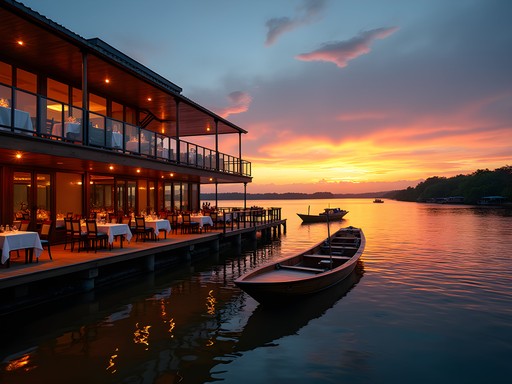
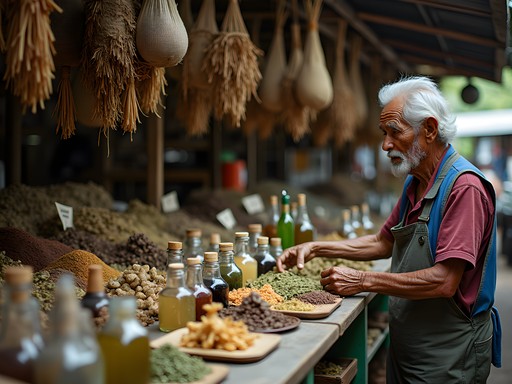



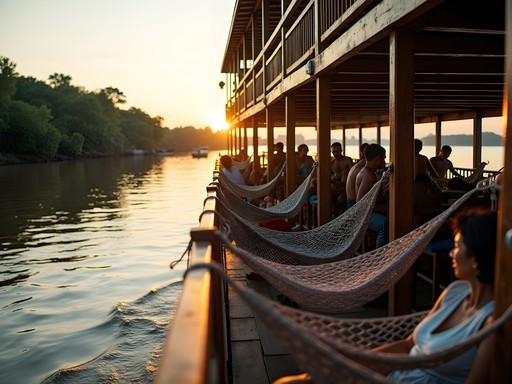
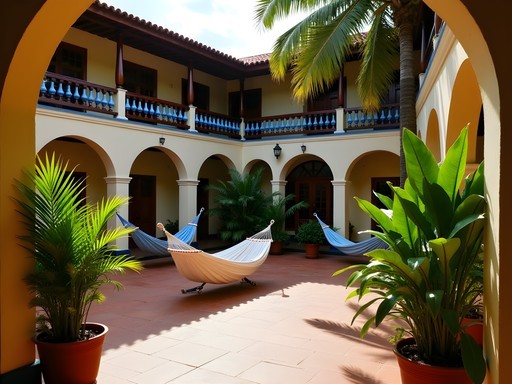


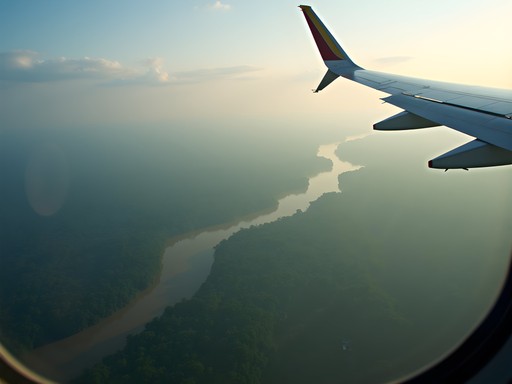
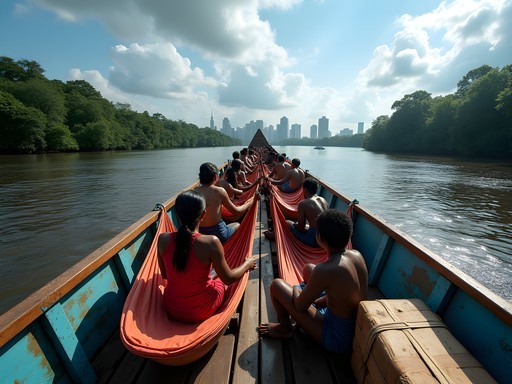


Comments
Hayden Butler
Kenji, you've captured the essence of Iquitos' food scene brilliantly. I was there about two years ago staying at the Treehouse Lodge, and what struck me most was how the luxury dining scene there is evolving while staying true to Amazonian ingredients. There's this fascinating fusion happening where traditional techniques meet modern presentation. Had an unforgettable 7-course tasting menu at ámaZ where they served me a chonta palm heart ceviche that changed my perspective on what Amazonian cuisine could be. Your section on medicinal gastronomy particularly resonated - I brought back some cat's claw and chuchuhuasi bark that I still brew into tea when I'm feeling under the weather. The intersection of healing and gastronomy in the Amazon is something truly special that more travelers should experience.
Kenji Kumar
Thanks Hayden! ámaZ was on my list but I ran out of time. That chonta palm heart ceviche sounds incredible. I'm planning to return next year to explore more of the high-end interpretations of Amazonian cuisine. The innovation happening there deserves more attention.
sunnystar1453
Did you experience any stomach issues with the exotic foods? I'm interested but have a sensitive system!
redway7181
Not OP but I was fine! Just stick to cooked foods and peeled fruits. The locals actually gave me uña de gato tea for digestion - worked wonders!
cityadventurer
Those medicinal plants sound fascinating! Never thought food could be so healing.
summerfan
This looks amazing! I'm planning a trip to Peru next year and definitely want to include Iquitos now. What was your absolute must-try dish if someone only has a couple days there?
Kenji Kumar
If you only have time for one authentic dish, make it tacacho con cecina - smoked pork with mashed plantain balls. And try a refreshing chapo drink (ripe plantains blended with milk). Both are quintessential Amazonian experiences!
Stephanie Romano
Kenji, this is such a beautiful deep dive into Amazonian cuisine! We took our kids (10 and 12) to Iquitos last spring and they were initially hesitant about the food, but ended up loving it. The paiche was a huge hit - my daughter still talks about that 'dinosaur fish'! We also took a cooking class with a local family where we made patarashca with freshly caught fish. The kids were fascinated by how they used the leaves for cooking instead of foil. If anyone's traveling with family, I highly recommend the cooking experience - it was so much more engaging than just eating at restaurants. Our guide used Amazon Jungle field guide which had some great info on local ingredients too.
summerfan
Do you remember the name of the cooking class? I'm planning to take my niece and nephew next year!
Stephanie Romano
It was with a family in Barrio Florido, about 30 minutes by boat from Iquitos. Our hotel arranged it - we stayed at the Doubletree. Just ask for local cooking experiences!
sunsetking
Those photos of the river fish dishes are making me hungry! Great post!
redway7181
Wow, this brought back so many memories! I visited Iquitos last year and the Belén Market was a sensory overload in the best way possible. Those juanes you mentioned were my absolute favorite - I still dream about that rice and chicken wrapped in bijao leaves. Did you try any of the exotic fruit liqueurs? The aguaje one completely blew my mind!
Kenji Kumar
Yes! The aguaje liqueur was incredible. I also tried a camu camu one that was surprisingly refreshing. The locals told me it has more vitamin C than any other fruit on the planet.
redway7181
Missed the camu camu one! Adding it to my list for next time. Your article really captured the essence of the place.
adventurepro
Just got back from Iquitos myself and this post is spot on! The river-to-table movement there is really taking off. We had an incredible meal at Ámaz where they served paiche fish that had been caught that morning. One tip for anyone going - don't miss trying chuchuhuasi, a tree bark infused rum that locals swear cures everything from arthritis to hangovers (though it definitely gave me the latter!). The medicinal gastronomy section of this post is particularly interesting - our guide showed us so many plants that are used both as food and medicine. The line between the two is completely blurred in Amazonian culture.
journeyhero
This sounds amazing! Did you do any cooking classes while you were there?
adventurepro
Yes! We did a half-day class at Al Frío y Al Fuego (it's on a floating restaurant). Learned to make juanes and patarashca. Highly recommend it!
starone
Heading to Iquitos in November! Did you try the aguaje fruit? I've heard it's really good for you but tastes weird?
Frank Garcia
Not the author but I tried aguaje! It's an acquired taste - kind of nutty with a creamy texture. The locals often make it into a sweet drink called 'aguajina' which is more approachable for tourists. Definitely worth trying both ways.
starone
Thanks! Will definitely try the drink version first then. Any other must-try foods you'd recommend?
Frank Garcia
Don't miss patarashca (fish grilled in leaves) and tacacho con cecina (plantain balls with dried meat). If you're adventurous, try the jungle liquors infused with local plants and roots. I brought back a bottle of herbal spirit that's supposed to have medicinal properties - can't vouch for the health claims but it makes a great conversation piece!
journeyhero
OMG those food pics are making me hungry!! Can't believe you ate grubs! You're braver than me lol
Venture X
Premium card with 2X miles, $300 travel credit, Priority Pass